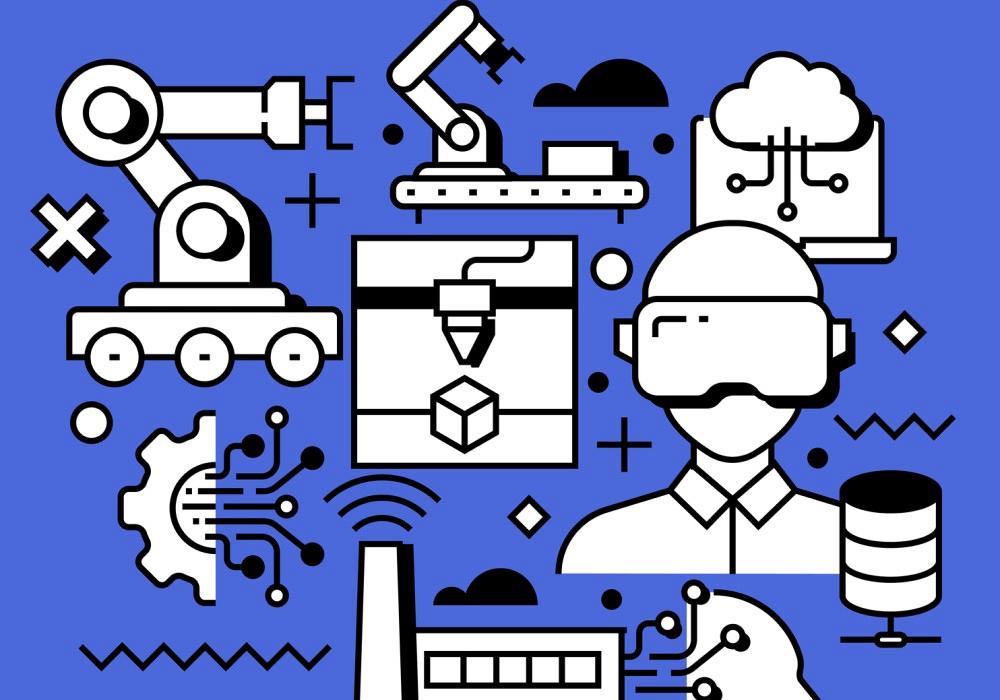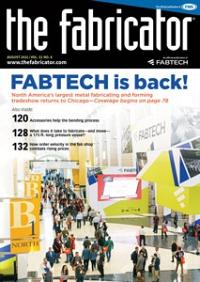Senior Editor
- FMA
- The Fabricator
- FABTECH
- Canadian Metalworking
Categories
- Additive Manufacturing
- Aluminum Welding
- Arc Welding
- Assembly and Joining
- Automation and Robotics
- Bending and Forming
- Consumables
- Cutting and Weld Prep
- Electric Vehicles
- En Español
- Finishing
- Hydroforming
- Laser Cutting
- Laser Welding
- Machining
- Manufacturing Software
- Materials Handling
- Metals/Materials
- Oxyfuel Cutting
- Plasma Cutting
- Power Tools
- Punching and Other Holemaking
- Roll Forming
- Safety
- Sawing
- Shearing
- Shop Management
- Testing and Measuring
- Tube and Pipe Fabrication
- Tube and Pipe Production
- Waterjet Cutting
Industry Directory
Webcasts
Podcasts
FAB 40
Advertise
Subscribe
Account Login
Search
How Industry 4.0 will forever change the fab shop
Solutions will just happen, no action required in modernized manufacturing settings
- By Tim Heston
- August 17, 2021
- Article
- Manufacturing Software

With every click and tap we make, Big Tech learns a little more, so much so that solutions—just the right answer from an internet search or anything else—seem to just happen. In the coming decades, this might happen on the metal fabrication shop floor too. Getty Images
Click. Tap. Click. That is the sound of money in the 21st century. Big Tech has turned into one of the world’s most profitable and culturally dominant industries, and it’s done it by tracking, harnessing, and profiting from our attention. Every time we click or tap our laptops or phones, Big Tech, through its mysterious algorithms, knows something about us that it didn’t before.
Those clicks and taps are analogous to industrial sensors; the former opens a window into human behavior, the latter measures the performance of machinery and systems. Sensors on machinery, from the smallest press brake to the most expansive flexible manufacturing system, have been around for years. But what about sensors that can work together to measure and autonomously improve an entire fab shop, tracking everything from the receiving dock to the shipping dock?
Sure, plenty of shops scan bar codes on order tickets, job travelers, or (in an entirely paperless environment) on the parts themselves. And a few operations might actually track the motion of work-in-process (WIP) as carts or fork trucks (or perhaps automated guided vehicles, or AGVs) go from machine to machine and station to station. So the plant gathers all this data. Now what?
I equate the state of Industry 4.0 to my first computer sporting Windows 95 and a web browser. That browser meant I could access all this information that I couldn’t before, at least not easily. With every passing month and year, the amount of information grew. It was all just so unfathomable.
Still, the 1990s internet didn’t change my life in a dramatic way. Early internet searches weren’t like Googling. The answer didn’t just appear. I and everyone else hadn’t clicked enough, and the algorithms behind internet search hadn’t learned enough. I had access to a seemingly infinite amount of information, but I had to do something with information before reaching my goal. For instance, I had to use the information the internet search gave me to refine my search terms. I’d search again, refine again, and sometimes come up short. Some information—be it a government document or the address of the bookshop down the street—hadn’t made it online to a place where search engines could see it.
Compare that to the state of Industry 4.0 today. Sure, some plants are far into the Google age, but most are in the age of Lycos and Yahoo. Metal fabricators have plenty of data, and most of it is turned into actionable information, but people still have to act. They still have to do something with the information.
The next generation of fabricators might find all this quaint. They might be working in an operation in which not just every job but every workpiece and component, even down to the individual weld nut, is visible, tracked, and learned from, analogous to those billions of clicks that feed information to Big Tech.
At FABTECH 2019 I spoke at length with Richard Boyd, the founder of Tanjo (rhymes with “bongo), a Carrboro, N.C., company that specializes in AI and machine learning. Boyd spoke of what he called the “enterprise brain,” effectively a businesswide problem-solving system that would draw on an immense amount of data to come up with solutions, many nonintuitive.
For instance, the brain theoretically (though this isn’t a reality yet) could schedule for optimal flow and minimal WIP between steps. It could release orders in new ways that would be extremely complex and cost-prohibitive to do manually, like running part X of one job with part Z of another job, splitting a job at one workstation multiple ways so that everything reaches assembly at just the right time, and the slowest component—the constraint element that needs to go through the most time-consuming processes—never stops moving. That is, the component moves from laser cutting to the press brake to welding to assembly, with no time spent waiting in a WIP queue.
The brain then feeds that information to engineering and quoting, refining manufacturability even further, based not just on the machines on the floor, but when the order is placed and what part mix is on the floor. It could, for instance, automatically uncover new opportunities for shared tool setups. One small change sends a ripple effect throughout the entire part mix at a given moment, everything adjusts, and the best solution just happens.
At that point the shop floor will have moved past Lycos and Yahoo. It’s Googling. And all those clicks—those points of data gathered from the receiving dock to the shipping dock—helped make it happen.
About the Author

Tim Heston
2135 Point Blvd
Elgin, IL 60123
815-381-1314
Tim Heston, The Fabricator's senior editor, has covered the metal fabrication industry since 1998, starting his career at the American Welding Society's Welding Journal. Since then he has covered the full range of metal fabrication processes, from stamping, bending, and cutting to grinding and polishing. He joined The Fabricator's staff in October 2007.
Related Companies
subscribe now

The Fabricator is North America's leading magazine for the metal forming and fabricating industry. The magazine delivers the news, technical articles, and case histories that enable fabricators to do their jobs more efficiently. The Fabricator has served the industry since 1970.
start your free subscription- Stay connected from anywhere

Easily access valuable industry resources now with full access to the digital edition of The Fabricator.

Easily access valuable industry resources now with full access to the digital edition of The Welder.

Easily access valuable industry resources now with full access to the digital edition of The Tube and Pipe Journal.
- Podcasting
- Podcast:
- The Fabricator Podcast
- Published:
- 04/30/2024
- Running Time:
- 53:00
Seth Feldman of Iowa-based Wertzbaugher Services joins The Fabricator Podcast to offer his take as a Gen Zer...
- Industry Events
Pipe and Tube Conference
- May 21 - 22, 2024
- Omaha, NE
World-Class Roll Forming Workshop
- June 5 - 6, 2024
- Louisville, KY
Advanced Laser Application Workshop
- June 25 - 27, 2024
- Novi, MI
Precision Press Brake Certificate Course
- July 31 - August 1, 2024
- Elgin,
































